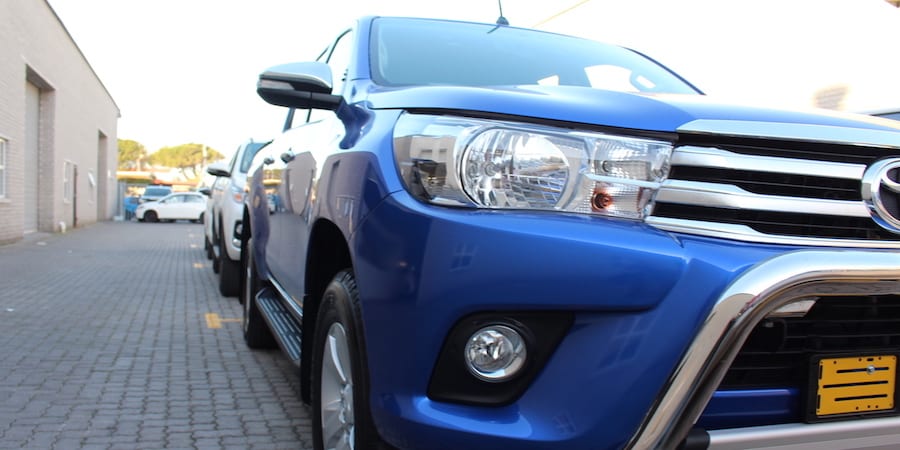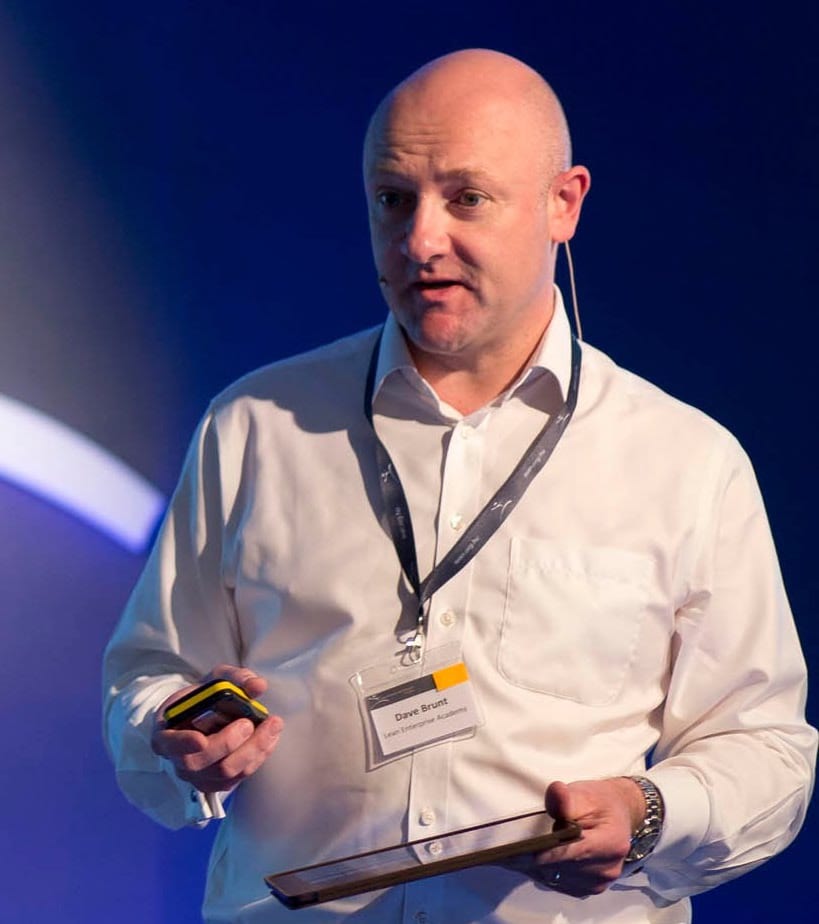
Freeing up cash by reducing stock at a lean car dealership
FEATURE – This story from Cape Town car dealership Halfway Ottery shows just how much eliminating stock can contribute to turning around a business by freeing up cash.
Words: Nizar Sherfodien, Finance Manager, Ashraf Isaacs, Production Centre Manager, and Charlie Cockrell, Finance & Insurance Manager at Halfway Ottery – Cape Town, South Africa.
When Halfway bought the dealership in 2011, cash became a serious problem. The deal was structured in a way that enabled the buyer to pay the seller in monthly installment. These payments of course came from the dealership’s revenue. Essentially, before the month was over, the money we had made was gone, which greatly limited our ability to grow. It was incredibly frustrating.
You need money to make money, and improving cash flow became vital for us at Ottery. We were introducing radical new ways of doing business and the sales volumes grew exponentially. As we expanded, we had to buy more and more cars to then sell. Before we knew it, we had more money sitting in stock than we care to think about!
Like most car dealerships, Halfway Ottery doesn’t own the new cars it sells. We use floor plan – a short-term bank loan that retailers use to buy high-cost inventory – to finance our stock, which of course incentivizes us to sell the cars as quickly as we can (the moment a vehicle is on the plan, it starts to cost us in interest and that’s an extra expense, and therefore waste). It is also a limited resource, as the banks took some time to recalibrate our floor plan ceiling in line with the growth of the volumes. When we look back now, their reluctance to believe we were a good risk for the increased finance was the best favor they could have done us. It gave us a problem to solve: how to grow when you don’t have the cash to fund the growth?
As lean thinking took root across Halfway, we came to the realization that if we wanted more cash, we’d have to get rid of stock – it’s one of the basic principles the methodology teaches us. That’s how our obsession with “cash-to-cash” came about. To us, this is a countermeasure to our problem of finding cash for grow: if we could shorten the time between having to pay for a vehicle and when we can collect the money after it is sold, we can turn the money faster and use it to buy the next vehicle we need to sell. Put like that, cash-to-cash sounds fairly simple to understand. Not always so simple to do. Part of what makes it more complex is the number of areas involved in the process of getting a car, getting it ready for sale, selling it, and collecting the money – a horizontal process that cuts across five of the vertical silos that are the structure of the dealership.
When we first introduced lean, it took five days for a sold new car to be prepped, delivered, and cashed in. We have been consistently trying to reduce the lead-time to three days, which is something of a challenge because in South Africa money normally takes around 48 hours to clear and reach our bank account. That means that we need to streamline every other part of the process, working closely with other departments to ensure the paperwork is completed and the vehicles are ready for delivery as quickly as possible. For us to move in the same direction, lean has to become commonplace in all departments.

PREPPING VEHICLES FASTER
Our colleagues Calvin, Charmaine and Dale have discussed the brilliant work the Sales Department carried out to streamline the selling process and boost revenue in another article for Planet Lean. But what happens after a vehicle is sold?
As soon as the sale happens, an order is raised through our IT system and the vehicle is pulled from the stockyard into the Production Center. This is where accessories (towbar, protective glass film, radio, etc) are fitted onto new cars, pre-delivery inspections (PDIs) are carried out, and the vehicles are cleaned and moved to the delivery bay on the showroom floor.
Our space on the showroom floor is very limited. It can only hold seven cars (less if they are minibus or SUV models). Since we are selling over 150 new cars a month at the moment, the scheduling of the delivery bays is very tight. In the latter part of the month, every bay becomes a delivery bay and the synchronization needs to be very good.
The Production Centre uses the two fundamental lean principles of flow and pull. Cars are brought in one at a time and flow through different bays depending on the type of work they need done. We started by doing improvements on the process, but ended up with something of a production line for reconditioning and preparing vehicles, in which the work has been segmented and broken depending on the amount of labor going into it. We work to a takt time of 30 minutes per vehicle on the new line.
Used cars are a lot more complex. Our used volumes have grown even faster than the new cars volumes. In 2012, we sold an average of 20 used cars per month, a number that has now risen to 130 (we have opened three additional outlets for used cars). Sourcing that number of used cars every month is a big task and it all has to be paid in cash before we can take possession of the car. The problem to solve is a lot bigger. Opening a second line at the prep center to do paint and dent reconditioning ourselves was part of the countermeasure to keep the time down (traditional panel shops just didn’t understand our urgency).
As soon as we get a car in, we immediately determine how much work will have to go into it. If parts are needed, we order them straight away (many vehicles are now sold with a kit of the most commonly asked-for accessories). Knowing the content of the work gives us a clear idea of when we can expect to be able to deliver a car. When a vehicle is ready, we cost the job card – calculating the cost of the fitments or reconditioning – and pass the information on to the dealership, so they can invoice the customer and finally hand them the vehicle.
Standards are the lifeblood of the new lean system: technicians coming from the floor every day know exactly what they need to do and what steps are required to complete a given job. We have standard work for everything, with every step in the process clearly mapped. Everybody can follow these instructions – we communicate them in a simple manner, mostly through pictures – starting from new hires.
Standardizing the work has freed up time, part of which is devoted to coming up with new and better ways to do things. One of the best examples of this is the improved process to install the “smash-and-grab” protective film for windows (they make it harder to break a glass, a stringent need in crime-prone Cape Town): applying the film used to take two to three people between 45 and 60 minutes, whereas now two people can complete the work in just six minutes. This was achieved by pre-cutting the film in the shape of windows of the car models that (we now know) we are going to work on each day.
Lean has revolutionized our system: in the past, when we worked in batches, we would experience a lot of waiting and then, all of a sudden, a bottleneck of vehicles. Flow has made our jobs predictable, easier, and more efficient. Everything is done to make sure a car is ready for sale and/or delivery as quickly as possible, and having more cars ready more quickly means that we never sit on our stock for too long.

PAPERWORK RIGHT FIRST TIME
The improved work that these days goes on in the Production Centre is not the only enabler of our cash-to-cash model; it is also made possible because of all the efforts we have put into ensuring we get the paperwork processed quickly (which happens in parallel with the vehicle preparation).
This change – which involved more than one department – wasn’t easy to effect, mainly because we are talking about paper. The work is harder to see, and figuring out what to measure and how was no easy feat for us.
Part of the process is handled by the Finance & Insurance department, which aims to secure finance from a financial institution for the customer. This involves determining what repayment the customer can afford, what vehicle they could buy, and if he or she has a good credit profile that will allow them to pay for the car. This involves gathering personal details, processing an application, and sending it to the different banks. (There are very stringent lending laws in South Africa and “reckless lending” is an offence.)
We began by following a deal file and introducing a few standards (without them, people naturally tend to slip back to the old ways of doing things), striving to deliver a high-quality service on time, every time. The value stream map helped us to determine the various actors that interact with the file and affect the outcome of the process. Based on the VSM, we decided what in this environment is the best process to make the deal flow through the system.
It is important that everybody knows exactly how to perform their tasks and what process to follow, which is why people development plays such a big role at Halfway Ottery. Today, everybody knows what information is needed at every stage of the process. To get there, we organized a presentation for the Sales department, to physically show them what documentation we need from them at each stage.
The result has been a remarkable increase in quality. Around a year ago, we did an assessment of seven files and found they were all incorrect. Now that we monitor things on a daily basis, we hardly ever have any faulty documents – 99% of the files at the moment are correct (for everything else, there is the andon cord).
Having everything right first time, all the time is one of the biggest advantages lean has brought us. It means so much to us, and the contribution it’s given to our cash-to-cash model can’t be overstated: processing the paperwork without hiccups (and preparing cars quickly in the meantime) greatly helps us to keep our inventory for as short a time as possible. Keeping everyone focused on the flow is key to the improved performance – luckily, we have done a lot of work over the last five years on the alignment of all staff. We had already built up a strong base of understanding between the departments and were able to draw on this for our cash-to-cash project.
Without the improvements in the cash-to-cash cycle, we would not have seen the growth we have over the years. The cash we freed up was used to source the stock, which drove sales, which generated the cash we needed to buy more stock and further increase sales, and so on. We pulled ourselves up by our own boot-straps, something generations have had to do on the Cape Flats, and we are well versed in the art. Two years ago, we were spending R2,600 on interest for each used car we sold (this could be as much as 15% of the gross profit we made), whereas we have now got that figure down to below R300 – an 88% improvement. Eliminating the waste of inventory by increasing the velocity has given us a better margin and helped keep the growth going. All this has been achieved in a market that is anything but buoyant.
We are not quite there yet – we still have bottlenecks and challenges caused by the month-end mentality so prevalent in this and many other industries. Protecting our flow will help us increase the velocity even more: having seen just how much flow has meant to our improvements, it is really frustrating to see the month-end surge undermine our efforts. For 2018, we have just launched a dealership-wide effort to try to achieve heijunka in all departments. Everyone has committed to trying to achieve 5% of their months’ target, every day. As we have learned, the more waste you remove, the more waste you see. At the same time, the more we learn about lean, the more opportunities for improvements we see.
REFLECTIONS FROM THE COACH

In the car industry, those buying used cars typically determine how much they want to spend to purchase and refurbish a vehicle, given the margin they want. The reality, however, is that it’s the customer who sets the market. The industry has to change, so what we are trying to do at Halfway Ottery is understanding what the market price is, understand what and how much work will go into the vehicle before we buy it, and then industrialize the work content so that the cost is as low as it can be. That means maintaining or increasing our margin – some sort of pre-diagnosing for used cars! You start from what the customer wants to pay rather than what you want to charge. This efficiency we are after also allows us to lower prices and increase volumes. It makes us more competitive. The strategy here is to go for volumes, keep the prices low (to be attractive to the local market) and retain customers for servicing.
Dave Brunt, CEO, Lean Enterprise Academy
Have you watched our documentary on their lean transformation yet?
THE AUTHORS



Read more


FEATURE – When it comes to the fight against climate change, we can’t expect to achieve much until we fundamentally challenge the way we think about resource consumption. Lean is our tool to do that.


FEATURE – Lean healthcare is new to China. The authors share some examples of improvements projects taking place in Chinese hospitals, which they hope will inspire more organizations to take lean on.


FEATURE – In the Shatila camp south of Beirut, a self-help program is making a difference in the lives of Palestinian refugees, engaging them in rehabilitating their shelters.


FEATURE – A group of Italian researchers and professionals partnered with a NGO to prove how lean thinking can pave the way for the competitiveness and sustainable development of SMEs in Myanmar. Is this a new model for the developing world?

